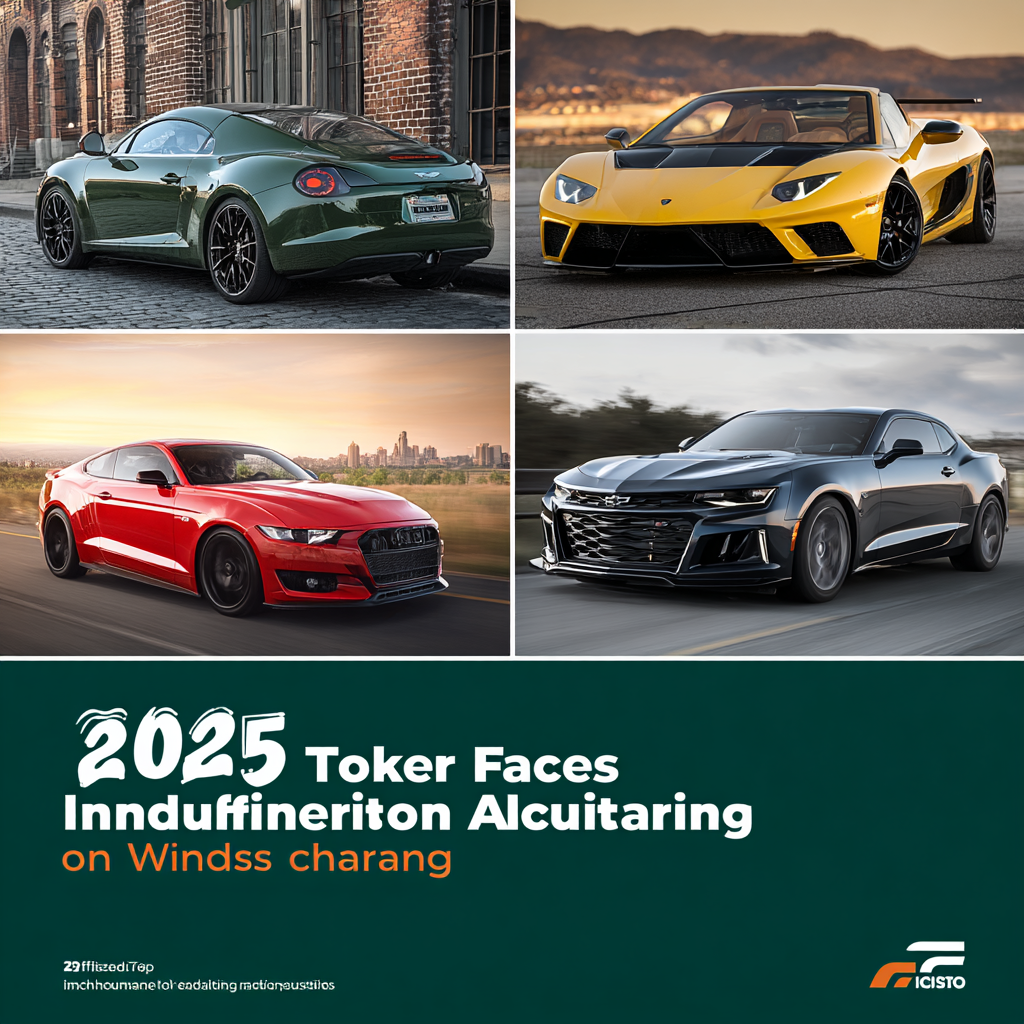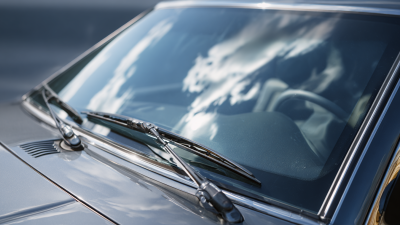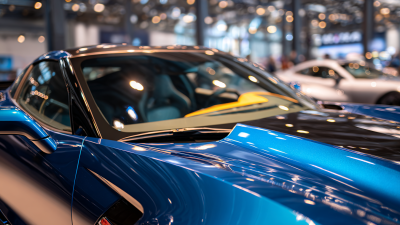2025 Top 5 Factors Influencing Windshield Change in the Automotive Industry
In the automotive industry, the evolution of technology and consumer preferences continually shapes the landscape of vehicle maintenance and repairs. Among the critical components requiring attention, windshield change stands out as a pivotal service influenced by several dynamic factors. As industry expert Dr. Emily Carter states, "The decision to change a windshield goes beyond mere damage; it encapsulates safety, innovation, and consumer behavior—elements that must be understood to navigate the future of automotive care."
As we approach 2025, various elements such as the rise in advanced driver-assistance systems (ADAS), environmental considerations, and changing consumer expectations will redefine how and when windshield change is approached. These factors will not only impact the cost and frequency of service but also the materials and technologies used in replacement windshields. By examining these influences, we can gain insight into the future of windshield change and how it fits into the broader automotive ecosystem, ultimately enhancing the safety and satisfaction of drivers everywhere.

Emerging Technologies Transforming Windshield Manufacturing and Repair Processes
The automotive industry is witnessing a significant transformation in windshield manufacturing and repair processes driven by emerging technologies. One of the most notable advancements is the integration of advanced materials such as laminated glass and polymers, which enhance durability and safety. These materials not only resist shattering during accidents but also contribute to weight reduction, directly impacting vehicle fuel efficiency. Additionally, the use of smart glass technology is becoming increasingly popular, allowing for features like variable tint and heads-up displays, which enhance the driving experience and provide added safety benefits.
Furthermore, innovative manufacturing techniques are reshaping how windshields are produced. Automation and robotics play a critical role in increasing efficiency and precision during the production process. This shift not only reduces production costs but also improves the overall quality of windshields. In parallel, 3D printing technology is emerging in repair processes, enabling quicker and more precise fixes that minimize downtime for vehicle owners. As these technologies continue to evolve, they are set to redefine the standards for windshield manufacturing and repair, leading to a safer and more efficient automotive sector.
The Impact of Autonomous Vehicles on Windshield Durability and Replacement Needs
The rise of autonomous vehicles (AVs) is significantly transforming the automotive industry, particularly regarding windshield durability and replacement needs. According to a recent industry report by McKinsey & Company, the AV market is expected to reach a valuation of $600 billion by 2025. This accelerated growth will inevitably impact the materials and technologies used in windshields, as manufacturers seek to enhance resilience against the increased demands of advanced safety systems and sensors integrated into these vehicles.
One notable trend is the use of specialized glass that can withstand higher stress and impact, which is crucial for protecting embedded sensors essential for AV operation. Data from the National Highway Traffic Safety Administration indicates that the frequency of windshield replacements for conventional vehicles may rise by nearly 30% as AVs proliferate, due to factors such as augmented reality displays and head-up displays that utilize the windshield. Additionally, predictive maintenance technologies will likely evolve, allowing for earlier detection of micro-cracks and minimizing the total cost of ownership, indicating a shift in how consumers approach windshield care and replacement.

Market Trends: Growth Projections for Advanced Driver Assistance Systems (ADAS) and Glazing Solutions
As we look ahead to 2025, advanced driver assistance systems (ADAS) are set to play a pivotal role in the automotive industry, particularly in influencing windshield change. The surge in integrating ADAS technologies in vehicles aims to enhance safety and convenience for drivers. Features such as collision avoidance systems, adaptive cruise control, and lane-keeping assist rely heavily on the precision of sensors and cameras, which are often mounted on or around the windshield. This growing reliance on ADAS means that the quality and clarity of glazing solutions must meet stringent standards to ensure optimal functionality.

Tips: When considering windshield replacement, ensure that the new glass is compatible with the vehicle's ADAS features. Quality matters; opting for OEM (Original Equipment Manufacturer) glass can prevent issues with sensor alignment and functionality. Additionally, always check if the replacement service includes recalibration of the cameras and sensors for accurate performance.
The market trends show an upward trajectory for both ADAS and glazing solutions. As consumers demand more safety features, automakers will prioritize innovations that cater to this need. This growth not only drives technological advancements but also necessitates the evolution of windshield design and materials, ensuring they can support the increasing demands of modern vehicles and their safety systems.
Consumer Preferences Shaping Windshield Design: Safety, Aesthetics, and Functionality
The automotive industry's approach to windshield design is increasingly influenced by consumer preferences, which prioritize safety, aesthetics, and functionality. In recent years, safety has emerged as the foremost concern for drivers and manufacturers alike. Advanced technologies, such as Head-Up Displays (HUD) and driver assistance systems, require windshields that not only withstand impact but also integrate seamlessly with electronic components. As a result, manufacturers are focusing on developing windshields that enhance visibility while providing essential safety features.
Aesthetics also play a crucial role in windshield design, as consumers are drawn to vehicles that embody both modernity and elegance. Sleeker designs and customizable options allow drivers to express their individuality, making aesthetics a significant factor in consumer decision-making. Functionality complements these aspects, with many buyers expecting features like UV protection, glare reduction, and noise insulation. The integration of these elements creates a well-rounded windshield that satisfies the diverse needs of modern vehicle owners, ultimately influencing the direction of the automotive industry's future.
2025 Top 5 Factors Influencing Windshield Change in the Automotive Industry
Legislative Developments Driving Innovations in Automotive Windshield Standards and Regulations
In recent years, legislative developments have significantly shaped the automotive industry's approach to windshield standards and regulations. New laws are emerging that not only aim to enhance vehicle safety but also promote innovations in windshield technology. Regulatory bodies are beginning to prioritize features such as advanced driver-assistance systems (ADAS) compatibility, which requires windshields to be manufactured with specific materials and technology integration. This shift is driving manufacturers to adapt quickly, ensuring that their products meet evolving legal requirements while also enhancing functionality.
Tips for consumers considering a windshield change include checking for compliance with the latest regulations. When selecting a replacement windshield, look for certifications that indicate it meets or exceeds current safety standards. Additionally, consider how new innovations, such as soundproof or UV-filtering glass, can improve your driving experience. Engaging with reputable service providers who are up-to-date with legislative changes is crucial for ensuring that your vehicle remains compliant and safe.
As these legislative trends continue to evolve, they are likely to influence consumer expectations as well. Awareness of the regulatory landscape can empower buyers to make informed decisions about their automotive needs. Staying informed about the latest windshield technologies not only enhances safety but can also contribute to a more enjoyable and secure driving experience.
2025 Top 5 Factors Influencing Windshield Change in the Automotive Industry
| Factor | Description | Impact Level | Year Introduced |
|---|---|---|---|
| Safety Regulations | Stricter safety standards leading to higher quality materials. | High | 2023 |
| Sustainability Initiatives | Focus on recyclable materials used in windshield manufacturing. | Medium | 2024 |
| Technological Advancements | Integration of advanced driver-assistance systems (ADAS). | High | 2022 |
| Consumer Preferences | Increased demand for enhanced visibility and durability. | Medium | 2025 |
| Legislative Changes | New laws promoting innovative windshield technologies. | High | 2023 |
Related Posts
-

How the Windshield Doctor Revolutionizes Auto Glass Repair: Insights and Innovations for Drivers
-

Choosing the Right Glass Windshield: Tips for Optimal Safety and Performance
-

Understanding Auto Glass Phoenix Trends and Their Impact on Vehicle Safety Statistics
-

2025 Top 10 Auto Glass Services in Phoenix: Exceptional Quality and Value
-

Exploring the Top Auto Glass Repair Services in Miami: What You Need to Know
-

Top 7 Auto Glass Fix Solutions for Quick and Affordable Repairs
